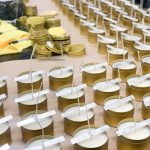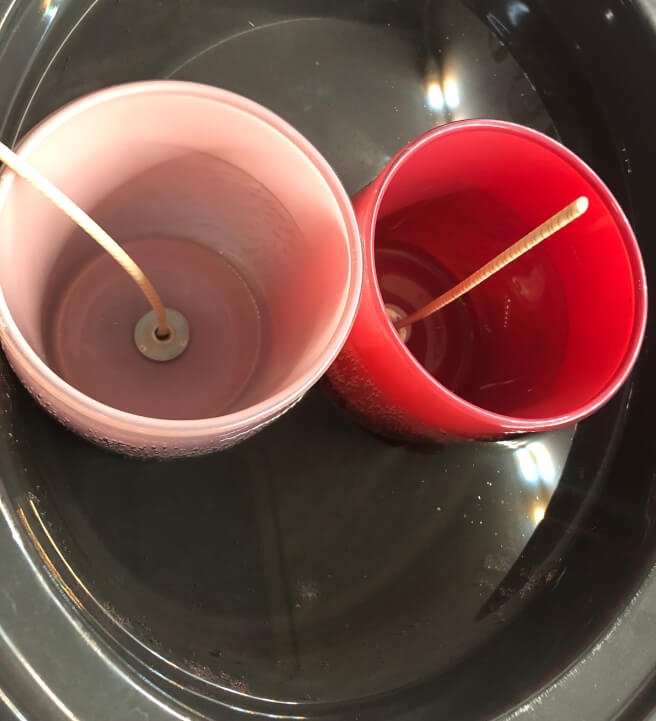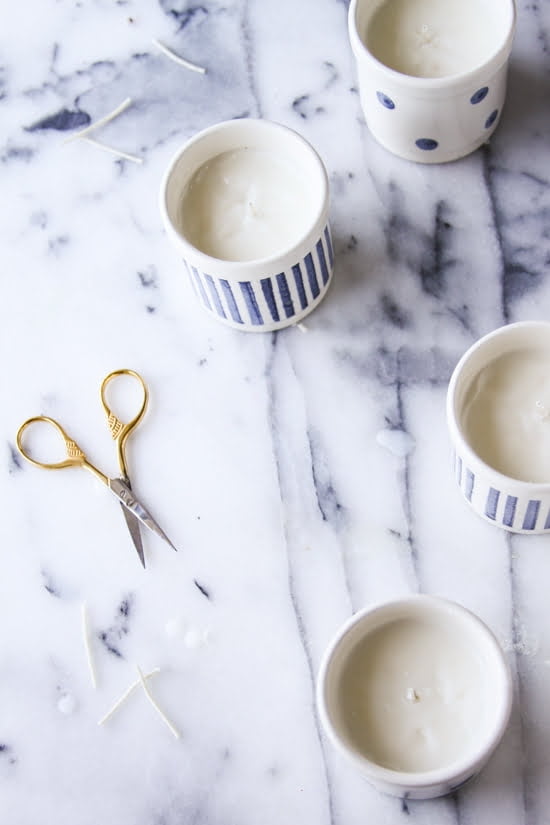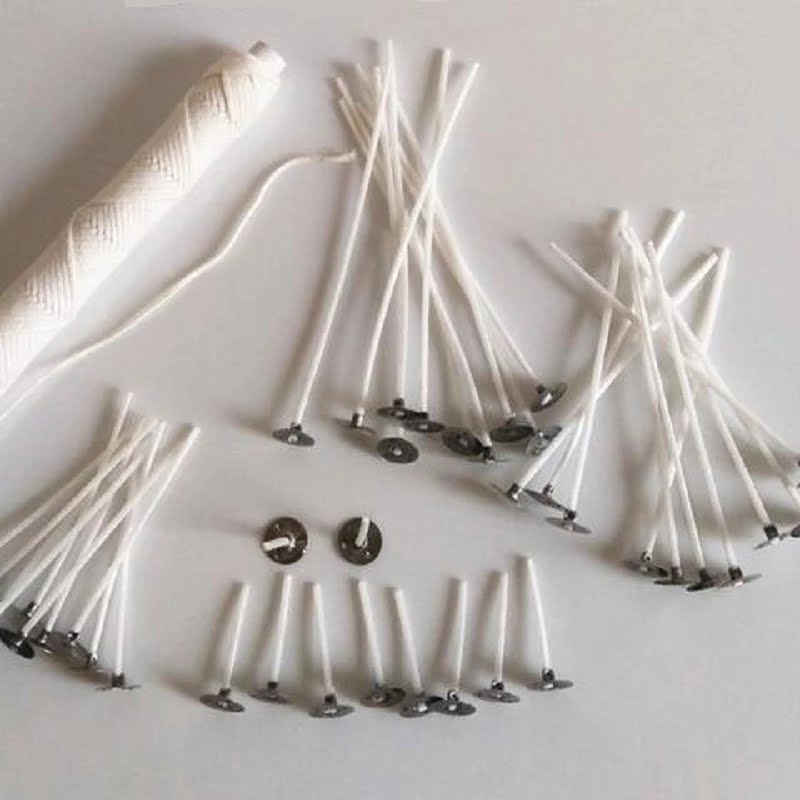Are you wondering what wick is best for Country Lane Candle making wax? Creating the perfect candle involves more than just choosing the right wax and scent. The type of wick used can significantly impact the performance and quality of your candles. In this article, we will explore the best wick options for Country Lane Candle making wax, as well as tips for proper placement and troubleshooting common wick-related issues.
Country Lane Candle Making Wax is a popular choice among DIY candle makers for its high-quality, all-natural ingredients and superior burning characteristics. Whether you are a beginner or an experienced chandler, understanding how to select the right wick for this specific wax is essential in achieving optimal results.
Choosing the right wick involves more than just picking one at random. Factors such as the diameter of the candle, desired burn time, and even the fragrance used can all impact which wick will work best with Country Lane Candle Making Wax. In the following sections, we will discuss the importance of selecting the right wick and explore different types of wicks suitable for use with this specific wax.
Understanding the Importance of Choosing the Right Wick
When it comes to making the perfect Country Lane candle, choosing the right wick is crucial. The wick plays a significant role in how the candle burns, including the size of the flame, the rate of wax consumption, and even the overall aesthetic of the finished product. With so many options available, it’s essential to understand the importance of selecting the best wick for your Country Lane candle making wax.
The type of wick you choose will depend on several factors, including the diameter of your candle, the type of wax you are using, and any additional fragrances or colorants. For Country Lane candles specifically, cotton wicks tend to be a popular choice due to their clean burn and minimal soot production. However, different cotton wicks may perform differently depending on their construction and treating methods.
Another crucial aspect to consider when selecting a wick for your Country Lane candle making wax is the burn pool diameter. This refers to the amount of melted wax that accumulates around the base of the wick as it burns.
If the chosen wick is too small for your candle’s diameter, it won’t create a large enough melt pool which can lead to tunnelling and uneven burning. On the other hand, if the wick is too large for your candle, it can create an excessively large burn pool which can lead to smoking and sooting.
Properly testing and experimenting with various wicks is key to finding the perfect match for your Country Lane candles. Conducting burn tests with different types and sizes of wicks will help you determine which one performs best in terms of flame size, melting pool diameter, fragrance throw and overall burning time.
| Wick Material | Best Use |
|---|---|
| Cotton | Ideal for clean burn and minimal soot production in Country Lane candles. |
| Wooden | Can add a natural aesthetic appeal but may require more experimentation. |
| Zinc-Core | Suitable for large-diameter Country Lane candles but can produce more soot. |
Types of Wick Materials Suitable for Country Lane Candle Making Wax
When it comes to choosing the right wick for your Country Lane Candle Making Wax, it’s important to consider the different types of wick materials available. The type of wick material you choose can have a significant impact on the performance and overall quality of your candles. Here are some common types of wick materials that are suitable for use with Country Lane Candle Making Wax:
Types of Wick Materials:
- Cotton: Cotton wicks are a popular choice for candle making as they provide a clean and consistent burn. They are known for their minimal soot and ability to work well with various types of wax, including Country Lane Candle Making Wax.
- Wood: Wooden wicks have become increasingly popular in recent years due to their unique aesthetic appeal and soothing crackling sound when burning. They are suitable for use with soy-based and other natural waxes.
- Zinc or Tin: These metal-core wicks are known for their rigidity and ability to resist mushrooming, making them a good option for longer-burning candles such as those made with Country Lane Candle Making Wax.
It’s important to carefully consider the unique characteristics of each type of wick material when choosing the best option for your specific candle-making needs. Factors such as burn time, candle diameter, fragrance load, and desired flame height can all play a role in determining which type of wick material will work best with your Country Lane Candle Making Wax.
Keep in mind that proper testing and experimentation is crucial when selecting the best wick material for your candles. Conducting burn tests with different types of wicks will help you determine which one performs the best with Country Lane Candle Making Wax, ultimately leading to high-quality candles that burn evenly and cleanly every time.
Factors to Consider When Selecting the Best Wick for Your Candle
Choosing the right wick for your country lane candle making wax is crucial in ensuring that your candles burn evenly and efficiently. There are several factors to consider when selecting the best wick for your candle, and taking these into account will help you achieve the desired results. Here are some key considerations to keep in mind:
Factors to Consider When Selecting the Best Wick:
1. Candle Size: The size of your candle will influence the type of wick you need. Larger candles require larger wicks to ensure an even burn, while smaller candles will need smaller wicks.
2. Wax Type: Different waxes have varying properties, so it’s important to choose a wick that complements the specific type of wax you are using. For country lane candle making wax, cotton or hemp wicks are often recommended for their compatibility with this particular wax.
3. Fragrance and Additives: If you are adding fragrance oils or other additives to your candle, these can affect the way the candle burns. It’s essential to consider how these factors might impact the performance of your chosen wick.
4. Preferred Burn Rate: Depending on whether you want a slow or fast burn rate for your candles, you will need to select a wick that aligns with this preference.
Remember that finding the best wick for your country lane candle making wax may require some experimentation and testing to determine which option works best for your specific needs and preferences. It’s essential to be patient and open to adjusting your selection based on the results of your tests.
Testing and Experimentation
When it comes to finding the perfect wick for your Country Lane Candle making wax, testing and experimentation are key. With so many options available, it’s important to take the time to test different wicks to find the one that will work best for your specific wax blend and desired candle size.
One of the most important factors to consider when conducting wick testing is the diameter of your candle. The larger the diameter, the larger and more robust your wick will need to be in order to provide an even burn. This is where experimentation comes into play, as you may need to try several different wicks before finding the perfect fit for your candles.
In addition to diameter, it’s also important to consider burn time and fragrance throw when testing different wicks. Some wicks may burn too quickly or not produce enough heat to effectively release fragrance throughout the room. By conducting thorough tests on each potential wick option, you can ensure that you’re choosing the best option for your specific Country Lane Candle making wax formula.
| Wick Material | Best For |
|---|---|
| Cotton | Even burn in small to medium-sized candles |
| Wooden | Enhanced fragrance throw in large candles |
| Zinc | Sturdy support for custom-shaped candles |
Tips for Proper Wick Placement in Country Lane Candle Making Wax
Proper wick placement is crucial when making candles with Country Lane Candle Making Wax. The position of the wick within the wax will directly impact how the candle burns and how long it lasts. Here are some tips to ensure the proper placement of the wick in your country lane candles.
Ensure Even Distribution
When placing the wick in the melted wax, make sure it is centered and evenly distributed. This will help the candle to burn evenly and prevent tunneling, where only the center of the candle burns down. Use a wick holder or pencil to keep the wick in place as you pour the wax into the container, ensuring that it remains centered throughout.
Consider Container Size
The size and shape of your candle container will also dictate where the wick should be placed. For larger containers, a larger wick may be necessary to ensure an even burn. Conversely, smaller containers will require smaller wicks. Be mindful of this when selecting and placing your wick for optimal performance.
Trimming the Wick
After your candle has cooled and solidified, trim the wick to approximately 1/4 inch before lighting it for the first time. This will help prevent excessive smoking and ensure a clean burn. Additionally, remember to trim the wick each time before re-lighting your candle to maintain proper burning conditions.
By following these tips for proper wick placement in Country Lane Candle Making Wax, you can optimize the performance and longevity of your handmade candles while enhancing their aesthetic appeal.
Common Wick-Related Problems and Solutions for Country Lane Candle Making Wax
When it comes to making candles with Country Lane Candle Making Wax, it’s important to understand that choosing the right wick is crucial for the success of your candle. However, even with the best wick selection, candle makers may encounter some common problems related to wicks. In this section, we will explore these issues and provide solutions to ensure that your Country Lane candles burn beautifully every time.
Uneven Burning
One common problem that candle makers may encounter with Country Lane Candle Making Wax is uneven burning. This occurs when the candle burns down on one side more than the other, leading to an uneven wax pool. This issue can often be attributed to a wick that is too large for the candle size or type of wax being used. To resolve this problem, consider using a smaller wick size or experimenting with different types of wick materials.
Sooty Residue
Another issue that can arise when using Country Lane Candle Making Wax is the presence of sooty residue on the container or surrounding areas when the candle is burning. Soot can be caused by a variety of factors, including using a wick that is too large, poor quality wick materials, or an inadequate burning environment.
To mitigate sooty residue, ensure that you are using the appropriate wick size for your candle and opt for high-quality wick materials designed for clean burning.
Mushrooming
Mushrooming refers to the formation of a dark carbon ball at the tip of the burning wick. This not only affects the aesthetics of your candle but can also lead to increased smoke and soot production. If you notice mushrooming in your Country Lane candles, consider switching to a lower-maintenance wick material such as cotton or wood that is less prone to this issue.
By understanding these common problems and their respective solutions, you can enhance your experience with Country Lane Candle Making Wax and create beautiful candles without any issues related to wicks. Remember that proper selection and maintenance of your wick are key factors in achieving optimal burning performance for your Country Lane candles.
Conclusion
In conclusion, selecting the right wick for your Country Lane Candle Making Wax is crucial in ensuring the quality and performance of your candles. With the wide range of options available, it’s important to consider factors such as the diameter of your candle, the type of wax used, and the desired burn time. By understanding the characteristics of different wick materials and conducting thorough testing and experimentation, you can find the perfect wick that suits your specific needs.
When choosing a wick for your Country Lane Candle Making Wax, it’s essential to consider not only the type of material but also the size and shape. Factors such as proper wick placement and avoiding common problems like tunneling or mushrooming can also greatly impact the overall performance of your candles. By following tips for proper wick placement and being aware of potential issues, you can enhance the burning experience and ensure a consistent, clean burn.
In summary, finding the best wick for your Country Lane Candle Making Wax involves a combination of research, testing, and attention to detail. By considering all relevant factors and being proactive in addressing potential issues, you can create high-quality candles that meet your expectations in terms of appearance, burn time, and fragrance throw. Remember that every candle is unique, so don’t be afraid to experiment until you find the perfect match for your Country Lane Candle Making Wax.
Frequently Asked Questions
What Is the Best Wick to Use When Making Candles?
When making candles, the best wick to use depends on the type of wax and the size of the candle. For soy or beeswax candles, cotton wicks are a popular choice due to their clean burn and minimal soot production. For paraffin wax candles, cored wicks are often used to promote an even burn.
How Do I Know Which Wick to Use?
Knowing which wick to use involves considering the diameter of the candle, the type of wax being used, and if any additives like fragrance oils or colorants are included in the candle. Generally, larger diameter candles require thicker wicks to ensure an even burn, while smaller ones need thinner wicks.
Conducting test burns with different wick sizes is also helpful in determining the right fit.
What Is the Cleanest Wick for Burning Candles?
The cleanest wick for burning candles is typically one made from natural materials such as cotton or wood. These wicks tend to produce less soot when burned, resulting in a cleaner overall burn for the candle.
It’s important to also trim the wick before each use to prevent any excess carbon buildup, which can lead to a dirtier burn and potential smoke emission.

Welcome to my candle making blog! In this blog, I will be sharing my tips and tricks for making candles. I will also be sharing some of my favorite recipes.





